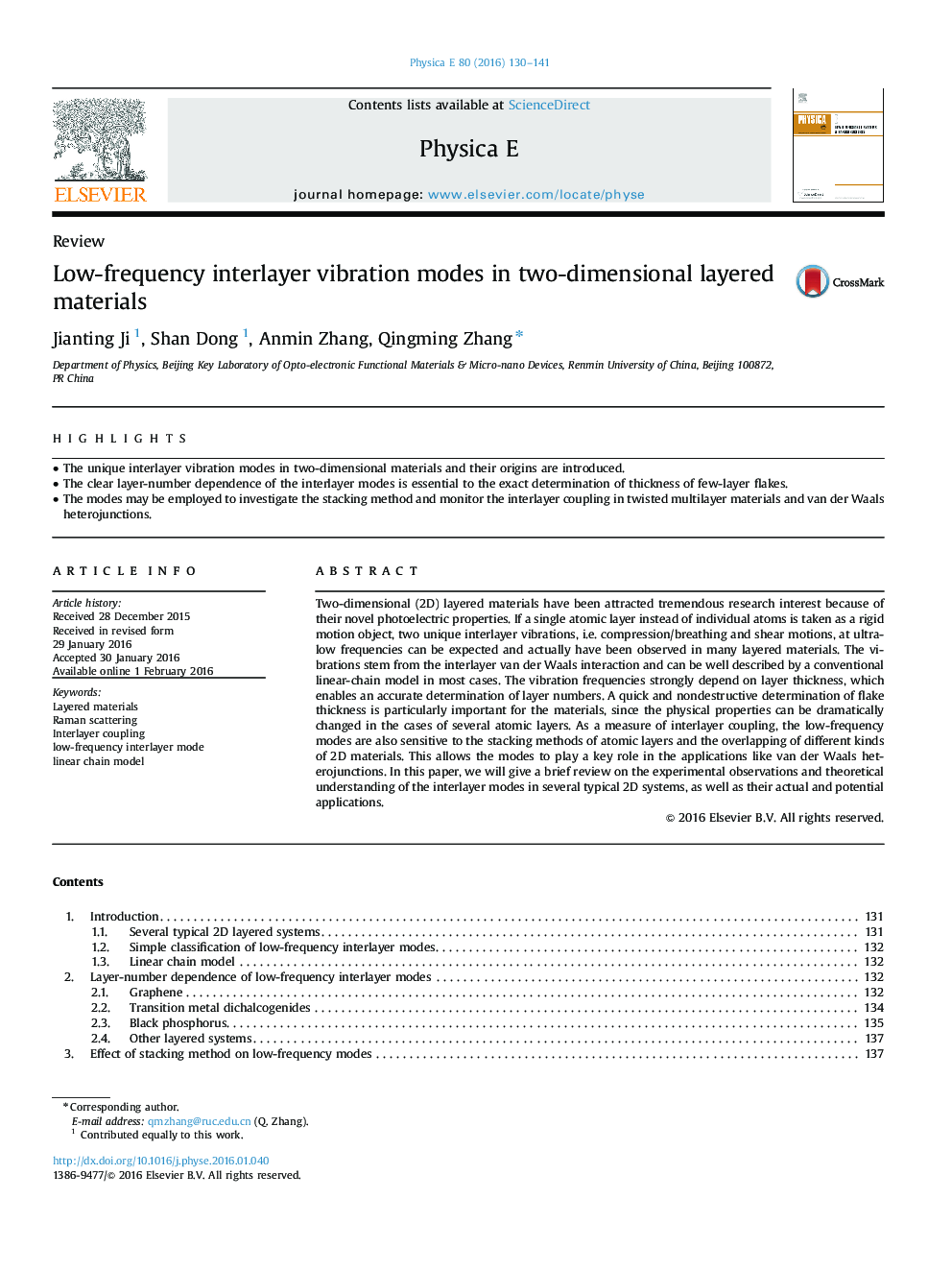| Article ID | Journal | Published Year | Pages | File Type |
|---|---|---|---|---|
| 1543703 | Physica E: Low-dimensional Systems and Nanostructures | 2016 | 12 Pages |
•The unique interlayer vibration modes in two-dimensional materials and their origins are introduced.•The clear layer-number dependence of the interlayer modes is essential to the exact determination of thickness of few-layer flakes.•The modes may be employed to investigate the stacking method and monitor the interlayer coupling in twisted multilayer materials and van der Waals heterojunctions.
Two-dimensional (2D) layered materials have been attracted tremendous research interest because of their novel photoelectric properties. If a single atomic layer instead of individual atoms is taken as a rigid motion object, two unique interlayer vibrations, i.e. compression/breathing and shear motions, at ultra-low frequencies can be expected and actually have been observed in many layered materials. The vibrations stem from the interlayer van der Waals interaction and can be well described by a conventional linear-chain model in most cases. The vibration frequencies strongly depend on layer thickness, which enables an accurate determination of layer numbers. A quick and nondestructive determination of flake thickness is particularly important for the materials, since the physical properties can be dramatically changed in the cases of several atomic layers. As a measure of interlayer coupling, the low-frequency modes are also sensitive to the stacking methods of atomic layers and the overlapping of different kinds of 2D materials. This allows the modes to play a key role in the applications like van der Waals heterojunctions. In this paper, we will give a brief review on the experimental observations and theoretical understanding of the interlayer modes in several typical 2D systems, as well as their actual and potential applications.
